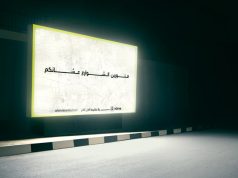Drawing for Children
Nurturing Artistic Skills in the Early Years
By Hilary Diack
Many families have their kitchen walls plastered with colourful drawings that their children have proudly brought home from nursery or school, but where do they go from there? Cairo East Magazine chatted with Ahmed Nadim, one of Cairo’s leading art teachers, to find out how parents can go a step further in developing their little one’s skills in drawing.
CEM: Tell us how you became interested in art; did you start from an early age?
AN: I studied architecture at Cairo University, but my interest in drawing and the arts really started from my very early years. Two aunts and an uncle played an important role but my mother above all was the key influence, we used to draw all the time and listen to music. This resulted in my developing an appreciation of colours, form and texture when I was a child; they had all completed their education in Fine Arts and gone on to become artists.
What inspired you to start teaching drawing to children?
That goes back to 2008 when I started working as a volunteer art teacher with a group of ten children at Nahdet El Mansoureya Community Centre, (where I am still working as a volunteer art teacher in various contexts). Over the course of a year it was gratifying to see the development of their skills and sense of accomplishment they attained. The transformation that took place at all levels of their lives in terms of self –esteem, confidence and appreciation of their own potential was really rewarding so I decided to continue offering drawing lessons to children on a broader scale.
Where are your classes available, and how much does a course cost?
Classes are held in several locations in Cairo, I teach in Zamalek, Maadi and Sheikh Zayed. Of course, if a pupil cannot get to any of the centres I am happy to arrange private tuition. Classes outside schools and art centres are formed also as groups. The fees depend on location and all materials are included, so there is no added expense.
At what age should a child start drawing lessons?
Children exhibit an interest in expressing themselves through art at an early age if given the chance, and it is great for parents to make art materials available at home for them to play with. When it comes to actual lessons I recommend that they should wait until they are four for my curriculum but in general I encourage them starting an art activity much earlier. The classes are two hours long, so younger tots may not have the attention span required.
How do children generally benefit from receiving drawing tuition?
Tests have shown that children who are introduced to art have improved brain activity with a better understanding of other subjects as well. Art offers an outlet for their creativity and inventiveness. It has been proven that if you draw what you are learning about, you will learn it much faster and retain the information much longer.
Our classes are configured to develop visual learning skills alongside drawing skills, resulting in improved perceptual and analytical abilities. They offer children a way to relax and have fun as well, as during every session we learn something new about the subject we are drawing.
What is included in a course?
Part I consists of 20 hours in total, divided into 10 sessions/ 2 hours once a week. In Part I, the children become familiar with the basic elements of shape; how these elements are placed in the environment; and learn how to draw from references (still life and photos). Children will also learn some relaxation techniques to enhance the learning process.
Some of our objectives in Part l are to develop the children’s drawing ability and enrich their visual observation of the world as well as improving their perception of their environment. The course aims at giving children the freedom to appreciate the fact that in drawing – and life – you may set out for one result and actually end up with an entirely different one. By the end of Part 1, children will be given a project to apply what they have practiced.
Part II also consists of 20 hours in total, divided into 10 sessions/ 2 hours once a week. In Part II, children tackle projects that are more advanced: they learn to use shading and produce volume in drawings, and will be introduced to new media such as charcoal and soft pastel. By the end of Part II children are given a new project to apply what they have practiced throughout Parts I & II.
Skills acquired here would include understanding the importance of composition, organization, and placement of multiple objects in a drawing and the introduction of basic elements and principles of design. We would also cover figure drawing; with an emphasis on anatomical construction, true proportions, and expressive actions of people, as well as portraiture. The children also learn how to deal with indoor environments and outdoor scenes, and to consider every scene and element suitable for a drawing project.
Part I and Part II form what I call “Stage I,” then I move with them into more challenging programs which include more still life drawing, advanced techniques and aspects of drawing.
Have any of your young pupils had their work exhibited?
I organized an exhibition for my students’ artwork last April and it received excellent reviews. Most of my students also have their online gallery on Artsonia.com: the most recognized student online art gallery, showcasing projects from around the world. Last November, I submitted the works of 12 of my students to the Space Foundation International Student Art Contest (2014) and we are looking forward to the results, which will come out soon. I am also very excited about the few coming weeks as we are preparing for the submissions for the Cairo International Biennale of African Children’s Art. The work of my students was also featured in the professional magazine Zambalita.
I am very proud of every one of my students.
www.facebook.com/DrawingInCairo








Comments are closed.